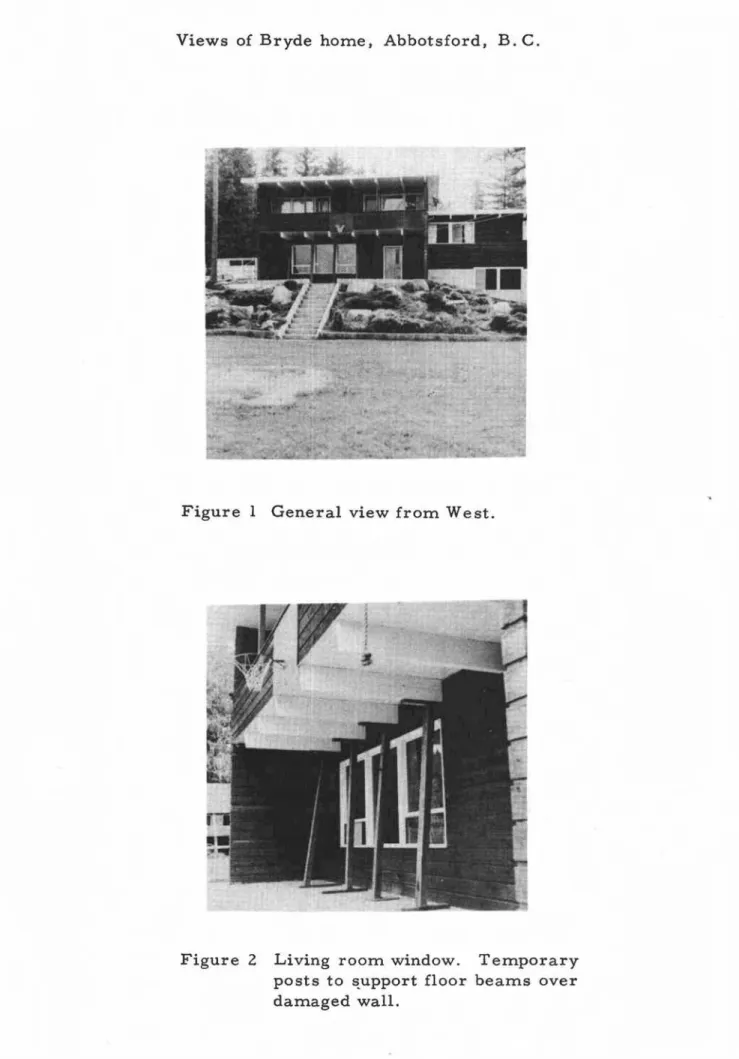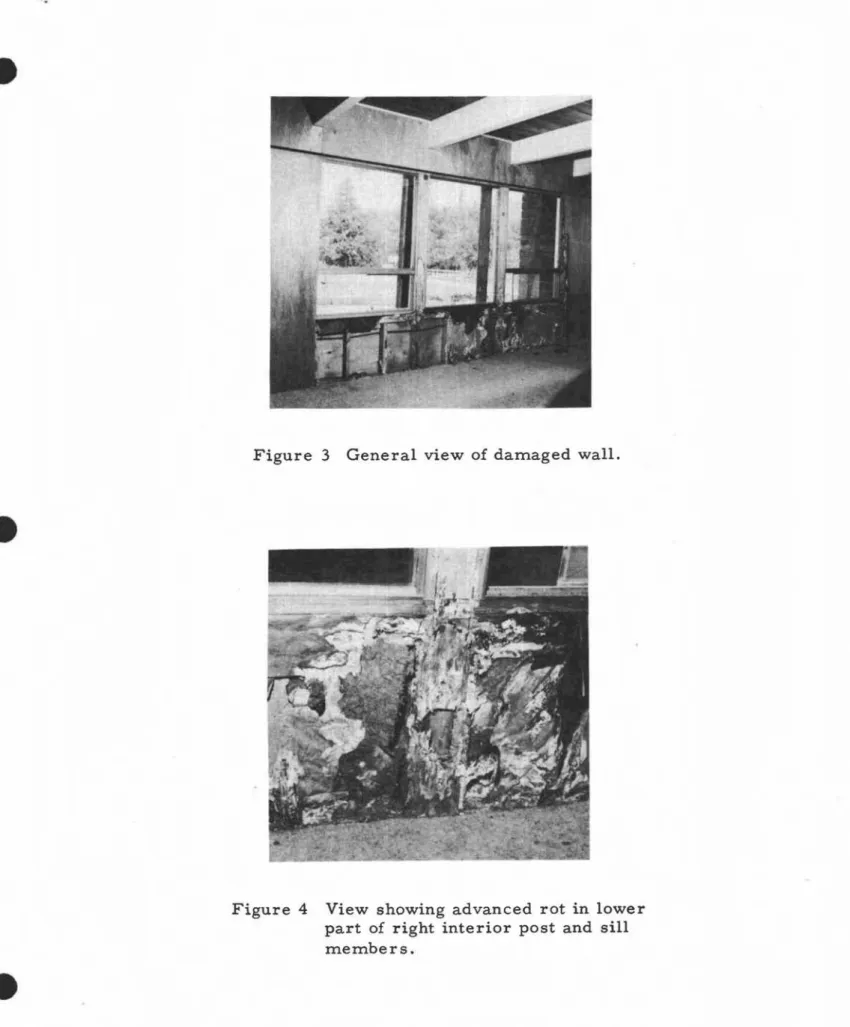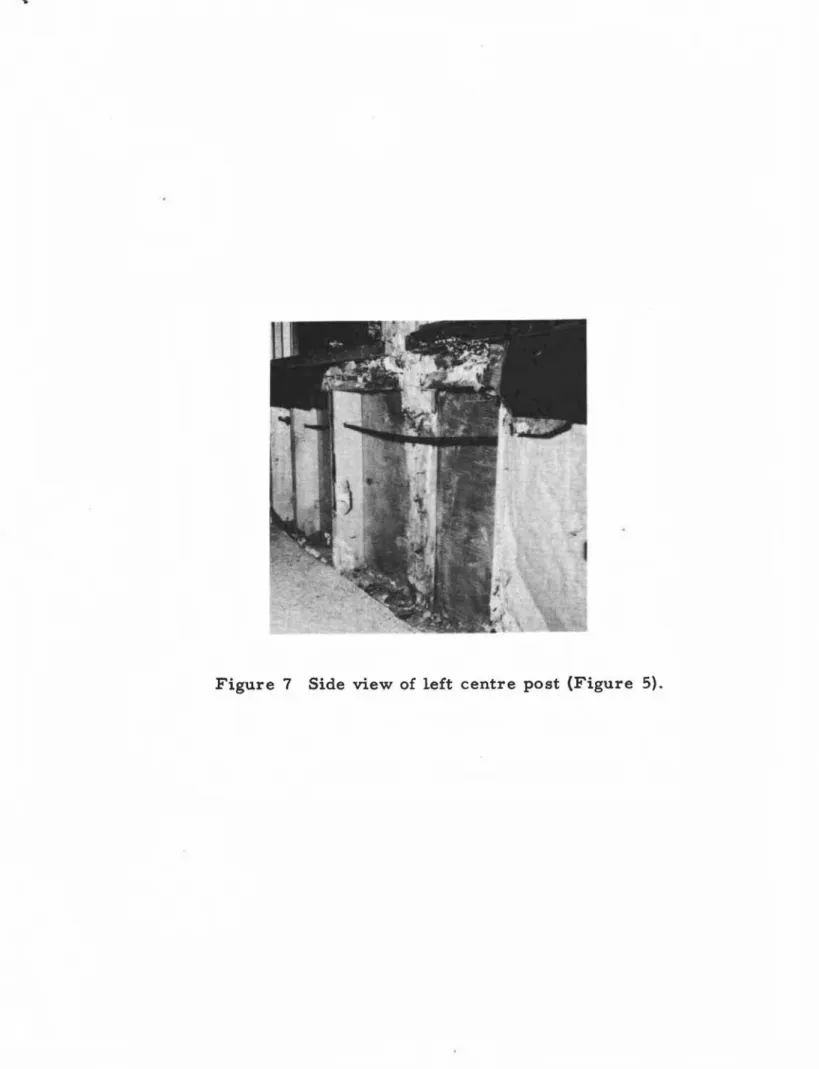Publisher’s version / Version de l'éditeur:
Technical Note (National Research Council of Canada. Division of Building
Research), 1965-10-01
READ THESE TERMS AND CONDITIONS CAREFULLY BEFORE USING THIS WEBSITE. https://nrc-publications.canada.ca/eng/copyright
Vous avez des questions? Nous pouvons vous aider. Pour communiquer directement avec un auteur, consultez la
première page de la revue dans laquelle son article a été publié afin de trouver ses coordonnées. Si vous n’arrivez pas à les repérer, communiquez avec nous à PublicationsArchive-ArchivesPublications@nrc-cnrc.gc.ca.
Questions? Contact the NRC Publications Archive team at
PublicationsArchive-ArchivesPublications@nrc-cnrc.gc.ca. If you wish to email the authors directly, please see the first page of the publication for their contact information.
NRC Publications Archive
Archives des publications du CNRC
For the publisher’s version, please access the DOI link below./ Pour consulter la version de l’éditeur, utilisez le lien DOI ci-dessous.
https://doi.org/10.4224/20358697
Access and use of this website and the material on it are subject to the Terms and Conditions set forth at
Wood rot in a wall of a post-and-beam house
Ball, W. H.
https://publications-cnrc.canada.ca/fra/droits
L’accès à ce site Web et l’utilisation de son contenu sont assujettis aux conditions présentées dans le site LISEZ CES CONDITIONS ATTENTIVEMENT AVANT D’UTILISER CE SITE WEB.
NRC Publications Record / Notice d'Archives des publications de CNRC:
https://nrc-publications.canada.ca/eng/view/object/?id=70ec0f22-db4e-442c-bd16-37f346ddba97 https://publications-cnrc.canada.ca/fra/voir/objet/?id=70ec0f22-db4e-442c-bd16-37f346ddba97DIVISION OF BUILDING RESEARCH
NATIONAL RESEARCH COUNCIL OF CANADA
'fE
C
1HIN ][
C!
AlL
No.
460
NOTlE
PREPARED BY W. H. Ball CHECKED BY APPROVED By NBH
セ October 1965
PREPARED FOR Inquiry and record purposes
SUBJECT WOOD ROT IN A WALL OF A POST-AND-BEAM HOUSE
The purpose of this Note is to record the details of a failure in part of a wall section of the horne of Mr. J. Bryde, located about two miles east of Abbotsford, B. C., adjacent to premises of the Star Meat Company. The horne was built during the fall and winter of 1959-60 and was completed in February 1960. The writer visited the horne 23 April 1965 to observe the problem, and again on 28 May 1965 to take photographs of the conditions that existed and to advise on corrective measures.
The house is of wood post-and-beam construction (an exterior view is shown in Figure 1). An exterior view of the living room windows, which face west, is shown in Figure 2. The temporary posts shown in Figure 2 were placed to support second-floor beams after slight subsidence had been noted.
Removal of the interior cladding (mahogany plywood) revealed advanced wood rot in the 4-by-4 posts between individual windows and at each side of the window group. This rot was centred in the posts at the line of the window sill. In addition, rot had moved horizontally into the sill members of the "roughrl opening. Two other areas of rot were noted
one in the lower wall-plate beneath the windows, and the other in the lower wall-plate below a duplex-receptacle located just to the right of the windows (Figures 3 to 7). Figure 3 is a general view of the damaged area. Figures 4 and 5 show advanced rot in the 4-by-4 posts between windows, and Figure 6 shows the right-hand side of the window with damage showing at the sill line and at the lower plate. Figure 7 is another view of the 4-by-4 post
:
2
-shown in Figure 5, and also shows how the rot has moved upward from the lower wall plate in a cripple {short stud} below the window. Mineral wool insulation was originally placed in walls.
It is interesting to note that in this situation the rot appears to have developed in the inner part of the wall behind the interior cladding and has progressed outward. There was no indication of wetting or rot in the exterior plywood sheathing. The sheathing paper which was folded inward over the sill was in good condition even though rot had developed in the sill members below it. The windows were sashless {Pierson} type, and were apparently unharmed.
Discussion
It is apparent that, for wood rot to develop to the extent shown, a substantial amount of water had entered and was stored in the wall during the past five years. Figure 2 shows an exterior view of the wall involved, with its 6-ft overhang, and there is shelter from both sides by wing walls. In view.of this substantial exterior protection it is unlikely that rain-leakage contributed to the problem. Accepting this, one must assume that the water carne from within the house.
Two mechanisms for moisture migration from buildings are recognized: water vapour diffusion and air exfiltration. Considering first the possibility of moisture movement by water vapour diffusion, one might expect that if moisture had condensed within the wall panels or
between posts and window frame s due to this mechanism, then the moisture would have accumulated in the exterior {and colder} parts first, and the wall sheathing and exterior cover plates would also have been damaged. This has not occurred.
It seems probable, therefore, that the second mechanism -- that of air exfiltration caused by wind action on the house - - is the cause of the problem. This conclusion is supported by an examination of the
method of placing the interior plywood wall cladding. A sketch of the wall section is shown in Figure 8. The plywood simply overlaps the window frames, being fastened by short casing nails. Figure 8 also shows the plate covering the 4-by-4 posts and part of the window jambs, particularly the cracks between these plates at the window sill and head line. and the plywood sheets above and below the windows. These cracks were not backed by a membrane so that warm air could enter the upper cracks, be cooled in the spaces between the jambs and the posts, leave part of its moisture near the bottom of the spaces near the sill line, and then re-enter
3
-the room via -the lower cracks. (Incidentally, the exterior cover plates were well fitted and all trim was well painted so that there was little open crackage.) This sugge stion is consistent with the pattern of rot that is shown, whereby the rot in the posts appears to have proceeded upward and downward from the 'sill line, and to the right and left in the
sill members.
The cause of the rot in the lower wall plate is not quite so obvious. It is possible that it was caused by the downward flow of
water along the posts. The extent of the rot along the lower plate below the windows, however, and the fact that rot developed in the plate below an electrical outlet, sugge sts that convection did take place so that air from the house entered a space behind the interior plywood cladding, was cooled, and returned to the room via a lower opening - - pos sible an unintentional gap between the interior cladding and the lower plate.
It is possible that the situation was aggravated by the dr.y"ing of the inner veneer of the plywood cladding, which would produce a tendency for the plywood to bow inward, thus widening perimeter cracks. Subsequent wetting of the outer veneer would cause added tendency to bow inward,
and so widen perimeter cracks still further. Conclusion
This failure provides striking evidence of the extensive damage that can result from the movement and storage of relatively small amounts of water in walls of buildings. It is also evidence of the need for provision and maintenance of an effective "air barrier" at or near the inner surface of building enclosure s.
- - -
--Views of Bryde hom.e, Abbotsford, B. C.
Figure 1 General view from. West.
Figure 2 Living room. window. posts to セオーーッイエ floor dam.aged wall.
Tem.porary beam.s over
Figure 3 General view of damaged wall.
Figure 4 View showing advanced rot in lower part of right interior post and sill members.
•
MMMセMMMMMMMMMMMMMMMMMM セMMセセM
-Figure 5 View showing advanced rot in lower part of left centre post, sill members, cripples and lower plate.
Figure 6 View showing rot at right-hand post and sill members.
..
セMMMM
MMM - - - M セ M M M M セ .
.,. • • 0';" . .
WINDOIl' JOINTS INUN8ACI{E-O PLYIVOOtJ CLADOING PLYlo,IOOD COVE-A PLATE: OVE.R POST .; IVINtJ0IV JAM8S I'/IJJOOIV '\ inteNjセエPQS E.LE.VAT tON E.LE.CT OUTLET
l
t:1
IlInlool'" FilM OUTE.q coveNセ pLATE:.-SIL.t- セ Uppt=.q SHE.E.T fLYIVOOO ,..tJppe/2/ C/?ACI{ pLyl'lOOtJ COIIE-R pLAT£. LOIVEt:J SHSEr pL.ylllooD tVALL SECTIONAT
eE-NTRE, \1/1/1100111 fjguセeNL8
E.LE..VATION
4-
SE.CTIONSDf
'VALL 5HO\VING ''IINDO\Varセaセg・NNmeNNnt AND patteNセn



